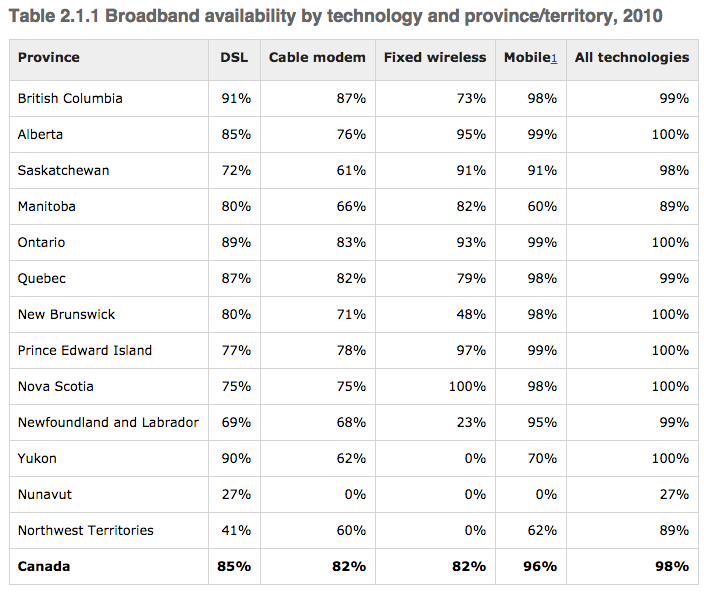Canada and Digital Literacies
Historical Perspective
In 2010, the Canada Government requested its citizens and organizations to contribute to a consultation paper on how to improve Canada’s digital economy. While this consultation paper brought forth many challenging questions regarding Canada’s future digital landscape, one section focused on training and learning. Questions posed were as followed:
- What can we do to ensure that labour market entrants have digital skills?
- How will the digital economy impact the learning system in Canada? How we teach? How we learn?
- What strategies could be employed to address the digital divide? (Government of Canada, 2010)
In response to these discussion questions, the Media Awareness Network (MNet), Canada’s not-for-profit center for media and digital literacy composed a strategy to enhance digital literacy in Canada entitled, Digital Literacy in Canada: From Inclusion to Transformation.
Barriers to Digital Literacies
The New London Group’s assessment of multiliteracies in 1996, suggested incorporating alternative literacies into our education which would not only benefit the individual but also society. If the benefits outweigh the hardships, why has the Canada Government delayed in formally addressing the importance of digital literacies? According to the MNet, Canada has five main barriers to digital literacies in Canada: age, attitude, socio-economic status, language and geography.
Age and Attitude
While many would agree the younger generations have a simpler time with technology because they have been entrenched in it for much of their lives, this may not be the case. Many would also agree that the older generations would be less inclined to use technology, therefore, be less digitally literate. There has been much debate and scepticism surrounding Prensky’s theory of digital natives. Digital natives are characterized as those who have been immersed in technological environments and have, therefore, adapted new learning styles because of this. Researchers, Margaryan, Littlejohn, & Vojt (2011), conducted a study challenging the notion of digital natives. Their results based on university students determined they are not technologically fluent, rather they naturally gravitate towards conventional forms of education enhanced by technology. While students were engaged with many technological tools their learning was limited by “their knowledge of the potential affordances and applications” of the tools and by “their narrow expectations of learning in higher education” (Margaryan et al., 2011).
In response to the debate surrounding digital natives, Ofcom, UK’s Office of Communications, devised an alternative to Prensky’s theory. The 2008 Report on UK adults’ media literacy created five levels of engagement with digital devices and technology: engaged, pragmatists, economisers, hesitants and resistors (p. 9). The engaged and pragmatists embrace technology in their lives, while the hesitants and resistors avoid technology as much as possible. The breakdown of ages, as determined by Ofcom, in each category are as follows:
This table highlights an interesting trend suggesting the ‘so-called’ digital natives are not the only group actively engaged/immersed in technological environments.
Socio-economic Status
A 2010 article published in the Canadian Journal of Communication suggested that those with higher incomes and education “are more likely to own computers, allowing more time to develop technical skills” (Howard, Busch & Sheets, 2010, p. 112). It can be argued that cities and towns provide free access to computers and internet through public libraries or schools to shrink the digital literacy gap between groups. However, a Canadian study showed higher levels of digital literacy for those who had access to a home computer (Howard, Busch & Sheets, p. 112).
Language
As most of the Canadian Internet resources are in English, Francophone Canadian and Native dialects are under represented on the Internet. As the MNet determines, this issue will quickly resolve as translation services such as Google Translate further develop.
Geography
As the majority of Canadians live close to the American border, internet access is plentiful. Those individuals residing in rural or Northern areas tend to lack reliable or fast connection speeds. According to the Canadian Radio-Television and Telecommunications Commission, northern territories and eastern provinces have the lowest connectivity rates hindering their ability to become digitally literate.
Source: CRTC data collection, November 2011
Future of Digital Literacies in Canada
While education in Canada is mandated provincially, the federal government and the Information and Communications Technology Council (ICTC) have created a vision for a digitally literate Canada.
ICTC’s vision is to ensure that all Canadian workers have a Digital Literacy capability equal to or exceeding the demands of their occupations, to provide an aquifer that allows Canada to grow in the digital age (p. 9).
To accomplish this, ICTC suggests creating a reference scale to standardize digital literacy knowledge, define the digital literacy levels required for occupations, create a program to educate young and old on digital literacy, and create partnerships with industry to assist in the successful creation of a digitally literate Canada (p. 9-10).
Finally, MediaSmarts, Canada’s Centre for Digital and Media Literacy, has created a digital literacy framework for Canadian Schools. The focus of this framework surrounds 6 concepts:
- Ethics and Empathy
- Privacy and Security
- Community Engagement
- Digital Health
- Consumer Awareness
- Finding and Verifying
MediaSmarts has compiled an outline for digital literacy skills to meet the developmental needs for differing divisions. For example, Grades K-3 focuses on online feelings and skills for searching strategies. Grades 4-6 students will learn effective researching techniques and authenticating online resources and Grades 7-8 will focus on authorship and authority of online information. While this is a roadmap for teaching digital literacy for students, it is ultimately the responsibility of the province to determine what types of digital literacies they wish for teachers to build into their classroom lessons. That being said, teachers in Canada have the freedom to teach with any appropriate technology tools at their disposal, therefore, teachers should be incorporating digital literacies into their lessons. The framework provided is a guide to effectively creating engaged, digital literate students able to manoeuvre in today’s society and prepare for whatever the future may hold.
Resources:
Canadian Radio-Television and Telecommunications Commission. (2011). Broadband report. Retrieved from http://www.crtc.gc.ca/eng/publications/reports/broadband/bbreport1111.htm
Government of Canada. (2010). Digital Canada 150: Building digital skills for tomorrow. Retrieved from http://www.ic.gc.ca/eic/site/028.nsf/eng/00041.html#discussionquestions
Howard, P., Busch, L., & Sheets, P. (2010). Comparing digital divides: Internet access and social inequality in Canada and the United States. Canadian Journal of Communications 35. pp. 109-128. Retrieved from http://www.ryerson.ca/~cmiddlet/cc8987/readings/2192-5865-1-PB.pdf
Indigo, A. (2006). Canada. [Photograph]. Retrieved from https://www.flickr.com/photos/alexindigo/2123523275/in/photolist-4eDBug-9H6oVL-u8s4L9-vEz7Nb-vsrgQQ-pUX59G-9ZjY8X-wFwhWr-ndqncV-buaomD-dikXt3-vXaV7C-vkpFZ7-gUXDY8-9Z14Fe-q9LB8x-cvthaQ-4WUDUC-aRJBQi-r3wVzo-pZRa77-9rCepR-qwGo4C-mxVZc7-fC8u7i-tNpwAF-odMtm8-jubx1Z-psXGtb-fCnMBQ-jkwYut-hKZUUH-nTgvmZ-aLYpiv-92SNhn-pZRaP9-bqLd4k-bqL9ez-bqKKii-bqLze2-bXdSxj-8eSr74-pPSEcU-2nMb6j-mxzJ9b-kWPwD-oeTe9c-q3iTcV-bqLpBr-vBRvZu
Information and Communications Technology Council. (n.d.). Digital literacy: Canada’s productivity opportunity. Retrieved from http://www.ictc-ctic.ca/wp-content/uploads/2012/06/ICTC_DigitalLitWP_EN_09-10.pdf
Margaryan, A., Littlejohn, A., & Vojt, G. (2011). Are Digital Natives a myth or a reality? University student’s use of digital technologies. Computers & Education 56 (2). pp.429-440
Media Awareness Network. (2010, July 7). Digital literacy in Canada: From inclusion to transformation. Retrieved from http://mediasmarts.ca/sites/mediasmarts/files/pdfs/publication-report/full/digitalliteracypaper.pdf
MediaSmarts. (2015). Use, understand & Create: A digital literacy framework for Canadian schools. Retrieved from http://mediasmarts.ca/sites/mediasmarts/files/pdfs/digital-literacy-framework.pdf
Ofcom. (2008, May 16). Media literacy audit: Report on UK adults’ media literacy. Retrieved from http://stakeholders.ofcom.org.uk/binaries/research/media-literacy/media-lit-2010/ml_adults08.pdf




